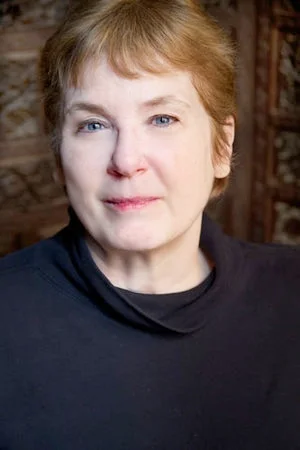CONNIE DYER
Hatha Yoga
I’m always looking for new ways within the ancient, powerful practice of yoga to release habitual patterns and discover genuinely nourishing, integrative movement. In my classes we explore our range of motion creatively and playfully in familiar postures and movement, uncovering new opportunities for stretch, challenge, and relaxing integrative release.
Yoga is essentially an embodiment practice. We make contact with ourselves on many levels through movement, conscious awareness, and breath; we discover from moment-to-moment just how our body wants to move and express itself and gradually learn how to let that movement happen. My goal in teaching is to help you find that freedom and to enjoy moving into and authentically being in your body.
March 12, 2018 Facebook post by Connie Dyer:
Ganesh Mohan, son of A.G. Mohan, recently noted on a private Facebook group page that any movement inquiry is yoga if it helps you “reduce suffering and bring well-being to body and mind.” And that THAT inquiry—not postural “form”—is "classical" asana, the yoga of Patanjali. He encouraged us to experiment, to study other modalities, like Feldenkrais, to be willing to break what we imagine is conventional wisdom or “rules” in exploring postural form. Another commentor posed a corollary, that “efficiency and effectiveness” are not perhaps to be pre-determined by the teacher, but to be experienced (discovered) by the student.
Yes! We are actually teaching the inquiry, the “practice”, the way of being, of experiencing. We can shape that inquiry by teaching students how to observe and comprehend what they experience, by bringing them into an awareness of the body-being and its dynamic, ever adapting potential for growth and transformation. We can share paths we’ve followed, point out what we and others have noticed, uncovered, found useful/interesting - and yes—notions of efficiency and effectiveness, of respect and safety, can be an important part of that sharing...but those things are just starting poInts for students’ experience.
We are not teaching students how to “perform” or “perfect” some ideal form of asana or breath, or even to master a prescribed “variation” or “adaptation”. We are not teaching form at all really except as it arises incidentally along the way. We are teaching ways of discovering, appreciating, enjoying, and growing from it—how to be aware of and to support our own continuous movement and form-ing in the midst of life, from moment to moment. This is the understanding I gathered from my time with Ganesh’s father, A. G. Mohan.
I observed during that period,that people learning to practice and teach asana often yearn for the comfort of certainty, of rules, prescriptions—patterns—when actually yoga is about recognizing and continuously releasing all sorts of patterns. A useful pattern serves temporarily to help us break a previous limiting one. But ALL patterns must be released, over and over as we grow and change. This I learned from Rudi and from Swami Chetanananda.
We are bound up in the limitations and delusions of linear time and space, but this is the secret meaning of Mohan and Desikachar’s multi-leveled principle “start where you are”. It is ultimately a dynamic flowing, moment to moment and breath to breath inquiry, not a static assessment and plan. Though it seems like that and certainly serves us along the way as we grow.

